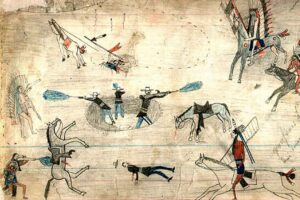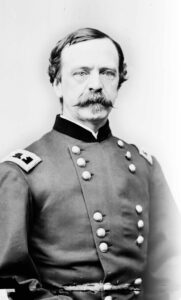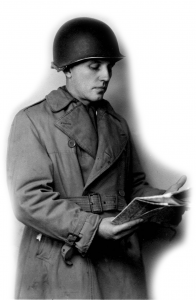
William Wallace Wotherspoon was born in Washington, D.C., on 16 November 1850 and received his educated in private schools. From 1870 to 1873, he served as a mate in the Navy. In 1873, he was commissioned a second lieutenant in the Army and assigned to the 12th Infantry. From 1874 to 1881, he served in the West and fought in the Indian Wars. In 1881, he and the 12th Infantry were assigned to northern New York. He married Mary C. Adams in 1887 before he took a sick leave from 1888 to 1889. When he returned from sick leave, he superintended the expansion of the Soldiers’ Home in Washington, D.C. In 1893, he was promoted to captain. The next year, he was assigned as an aide to the commander of the Department of the East, General Oliver O. Howard.
Wotherspoon served as a professor of military science and tactics at Rhode Island College from 1894 to 1898. In 1898, he was on recruiting duty for the 12th Infantry at Fort McPherson, Georgia. He fought in the Philippine Insurrection from 1899 to 1901. He was promoted to major and served with the 30th Infantry. From 1902 to 1904, he taught at the General Staff College. He was promoted to lieutenant colonel and assigned to the 14th Infantry. Wotherspoon graduated from the Army War College in 1905 and then became the director of that College until 1906. The next year, he served as the chief of staff of the Army of Cuban Pacification. He then became the acting president of the Army War College.
Promoted to brigadier general in 1907, he served as the president of the Army War College from 1907 to 1909 and again from 1910 to 1912. He was instrumental in making the College an autonomous education institution; previously it had been an adjunct to the General Staff. Wotherspoon served as an assistant to the Army chief of staff from 1901 to 1910 and then again from 1912 to 1914. In 1912, he became a major general. He served as Army Chief of Staff from 21 April to 15 November 1914. During his tenure as the Chief of Staff, he called attention to the lack of officers and noncommissioned officers in the Army, he established an aviation wing of the Signal Corps and completed the Panama Canal. In November 1914, he retired from active duty. He then served as the superintendent of public works for the State of New York until 1920. He died in Washington, D.C., on 21 October 1921.



